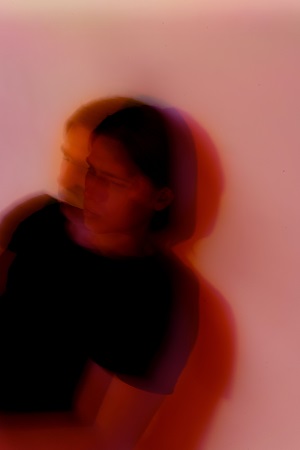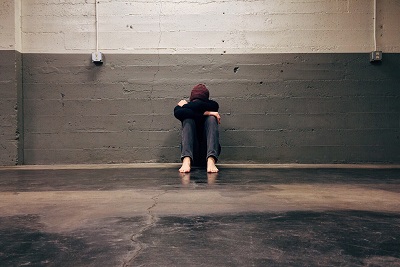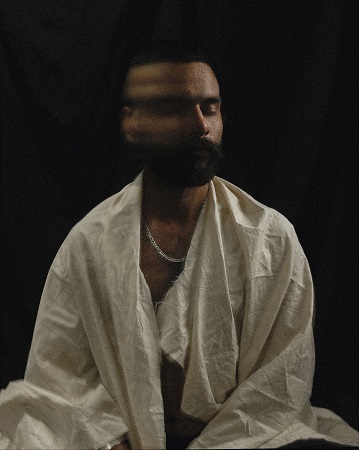Contents
Bipolar disorder is a mental health condition causing extreme mood swings. It was earlier known as manic depression. There are generally two stages in this disorder, high (mania or hypomania) and lows (depression). Bipolar disorder symptoms could observed during the high state when one might feel full of energy or euphoric or during the depression phase when one feels hopeless and loses interest in most activities. These mood swings may be rare or occur multiple times a year. In this disorder, the mood swing disturbs sleep, energy, judgement, thought process, behaviour etc. Though it is a treatable but it is a lifelong condition. There is a treatment plan such as medication or psychotherapy.
This mental disorder shows significant mood swings. In contrast, in some cases, there is no depressive or manic or hypomanic state. People with bipolar also go through normal moods, called euthymia.
Types of Bipolar Disorder
Depending upon manic, hypomanic and depression state and their frequency, there are a couple of types of bipolar disorder.
Bipolar I disorder: There is a minimum of one manic episode preceded or followed by a hypomanic or major depressive stage. A manic episode can trigger Psychosis or a break from reality.
Bipolar II disorder: In the case of bipolar II disorder, there must be one major depressive episode and at least one hypomanic episode. There is no manic episode in Bipolar II disorder.
Cyclothymic disorder: There are hypomanic symptoms and periods of depressive symptoms lasting for at least 2 years, whereas 1 year in children and adolescents.
Bipolar Disorder Symptoms

Bipolar I and bipolar II both have separate diagnosis. People with bipolar I can have severe and dangerous manic episodes. In contrast, those with bipolar II can be depressed for longer. It can happen at any age. Generally, people with this mental disorder are diagnosed in their teenage years. Bipolar disorder symptoms vary from person to person and may change over time.
Manic Phase – bipolar disorder symptoms
Manic episodes distinguish bipolar I disorder. The manic episode of Bipolar I disorder must happen once in life and should last for at least a week. In the manic phase, the patient has elevated mood and extreme changes in emotions, thoughts, energy, talkativeness and activity level. This hyper-energized physical and mental level is different from usual and noticeable to others. A patient could also develop psychotic symptoms, such as delusions and hallucinations. Because of such delusions and hallucinations, it is challenging to distinguish bipolar illness from schizophrenia or schizoaffective disorder.
Hypomanic phase – bipolar disorder symptoms
Patients with bipolar II disorder experience hypomania. Hypomania could be defined as a less severe form of mania. It lasts less than manic episodes and doesn’t interfere with daily functioning like manic episodes.
Depressive phase – bipolar disorder symptoms
In the case of the depressive phase, one experiences a low or depressed mood. The person loses interest in most activities, feels tired, has a change in appetite, and has constant feelings of worthlessness and hopelessness.
Bipolar disorder symptoms in manic and the hypomanic phase.
• Abnormally hyperactive or jumpy
• Excessive happiness, hopefulness and excitement.
• Making grand and unattainable plans.
• Reckless and risk-taking behaviour
• Psychosis – hallucinations and delusions.
• High energy or agitation
• Euphoric state
• Heightened self-confidence
• Lack of sleep
• Talkativeness
• Distractibility
• Impulse-based decision-making
Bipolar disorder symptoms in depressive phase.
• Feeling sad, hopeless or worthless and depressed
• In children and teens, depressed mood can be noticed as irritability
• Loss of interest in all activities
• Lack of motivation
• Significant weight change
• Change in appetite
• Insomnia or too much sleeping
• Fatigue
• Reduced ability to concentrate
• Suicidal thoughts
Bipolar Disorder Symptoms of a mixed episode
In the case of a mixed episode, symptoms of both manic and depressive phases show up together. One can feel sadness, hopelessness or worthlessness, restlessness, agitation and hyper energy. A mixed episode is often narrated as the worst part of bipolar condition.
Bipolar Disorder Symptoms in children and teens
It is pretty challenging to identify bipolar disorder symptoms in children and teens. Because they have regular ups and downs as it became hard to distinguish between them.
One can only compare their regular mood changes and severe mood swings to understand what they are suffering from.
Complications
One must follow a proper treatment regime to avoid severe problems that affect one’s life. Untreated disorder can cause
• Drug and alcohol abuse
• Suicide attempts
• Suicide
• Financial problems
• Relationship problems
• Poor performance at school or work
Co-occurring conditions

There could be other health conditions that must be attended to, along with the disorder. Otherwise these can complicate bipolar disorder symptoms, and the treatment is also hampered. Such co-occurring conditions could be
• Eating disorders
• Attention-deficit/hyperactivity disorder (ADHD)
• Alcohol or drug abuse
• Cardiac problems
• Thyroid problems
Risk factors involved
The risk factors increase the chance of developing the disorder, are shown below.
- A first-degree relative, such as a parent or sibling, with same disorder
- Long periods of high stress
- Traumatic events
- Alcohol or drug abuse
Suicide
People with severe disorder can become suicidal. There are warning signs to look out for and help the people before it is too late.
- Depression
- Isolating oneself
- Talking about suicide or death
- Reckless behaviour
What is ultra rapid cycle?
The mood swings frequency varies from person to person. Some people experience shifting from mania to depression many a time within one single day. It is called as “ultra-rapid cycling.”
Does having one manic episode necessarily mean one will have depressive episode?
Sometime patients have one single episode only, though in most cases there are more than one episodes. The number of attack in one’s life time varies. Appropriate treatment can reduce such phases. But if treatment is ignored, or medicines are not taken as per doctors advice then it can recur.
Who does bipolar illness affect?
It can happen to anyone. On average early twenties is the prime time of onset of it’s symptoms. But it can begin in childhood or teen years. Sometimes it can occur in the late 40s also.
How common is bipolar illness?
Approximately 5.7 million American adults, or about 2.6% of the U.S. population, have the disorder.
Causes of bipolar disorder
The exact reason behind the disorder is not entirely understood. Genetic, environmental and neurological factors could influence symptoms of bipolar disorder.

Genetic cause of bipolar disorder
It is believed that Genetic influence is responsible for 73–93% of the risk of developing bipolar disorder. It indicates the involvement of hereditary components. The disorder is common in people with a first-degree relative, such as a sibling or parent, with a similar condition. Still, researchers did not find any specific gene responsible for the disorder. Bipolar disorder is often also associated with increased levels of oxidative DNA damage.
Environmental cause of bipolar disorder
Environmental or social factors play a significant role in the development and course of bipolar disorder. Life events and relationships contribute to the onset and recurrence of bipolar mood episodes. People diagnosed with bipolar disorder often describe traumatic or abusive experiences in childhood.
Neurological cause of bipolar disorder
Bipolar disorder may occur due to or in association with a neurological condition or injury, including stroke, traumatic brain injury, HIV infection, multiple sclerosis, porphyria, and rarely temporal lobe epilepsy.
Prevention
As the exact cause of of the disorder is still unknown, it is impossible to prevent it like any other disease. But suppose one is aware of the bipolar disorder symptoms. In that case, they can seek early intervention from a mental health professional. It will help to ease the symptoms or stop them from worsening. Try to avoid alcohol, drug and tobacco or any trigger that one might feel causing the symptoms. Do not hesitate to ask your friends and family for support, and do not delay seeing a health professional. Also, never stop treatment or reduce the dosage without consulting your doctor first.
Can lifestyle changes help?
Yes, a lifestyle change can help fight against bipolar disorder symptoms. Some of these lifestyle changes include:
- Quitting alcohol, drugs and tobacco: Alcohol, drugs, and tobacco might interfere with the prescribed medications. Therefore, bipolar disorder symptoms may worsen and trigger a mood episode.
- Maintain a mood chart: One should maintain a mood chart and write down daily thoughts, feelings, and behaviours. It will help the patient and the doctor understands how well one responds to treatment. It also helps to identify potential triggers of the manic or depressive phase.
- Healthy sleep schedule: The sleep pattern is disturbed in both manic and depressive phases. A change in sleep pattern can trigger an episode. Therefore healthy sleep schedule is essential. One should try to maintain a sleeping schedule to avoid such triggers.
- Regular Exercise: Regular exercise helps mood enhancement and could significantly help someone with bipolar disorder symptoms.
- Yoga and Meditation for inner peace: Yoga and Meditation improve depression, a significant phase associated with bipolar disorder symptoms.
- Manage stress and anxiety: Stress and anxiety impact bipolar disorder symptoms, which worsen the patient’s mood. One needs to manage stress healthily and try to eliminate stressors.
When to see a doctor
Sometimes people with the disorder might not understand how it is affecting their lives and the lives of their loved ones. If you or anyone in your family display any symptoms of mania or depression, immediately seek the help of mental health professional. It needs treatment, and one won’t is better on their own. Doctors having experience in treating the disorder can help your bipolar disorder symptoms under control with medication and proper therapy.
When to get emergency help
People with the disorder can have suicidal thoughts. If you have thoughts of hurting yourself, immediately call 911 or your local emergency number or get in touch with a trusted relative or friend.
If your loved one is in danger of suicide or has made a suicide attempt, don’t leave them alone. Immediately call your local emergency number or take the person to the nearest hospital emergency room.
What can family members do to support a person with the disorder?
Family support is always essential. Providing mental and emotional support throughout the treatment will help ease the symptoms and obtain better results from the therapy.
Can someone with disorder be treated without medication?
It is impossible to ascertain beforehand if a patient can be cured without medicine. A patient might not respond well to any medication or therapy depending upon the severity and case-to-case basis. But it is always advisable to reach out to the mental health care professional and get treatment as per the doctor.
Borderline personality disorder and bipolar disorder?
Though bipolar disorder and borderline personality disorder (BPD) have similar symptoms, they are two different conditions.
Borderline personality disorder (BPD) shows an intense fear of abandonment, a pattern of unstable intense relationships, and mood swings. BPD symptoms can last from a few hours to a few days. They can include extreme happiness, irritability, shame or anxiety. Self-injury is also common in BPD, but suicidal chances are less common in BPD.
Bipolar disorder shows distinct, longer-lasting episodes of mania or hypomania and depression, which are absent in BPD.
References
- Bipolar disorder. (n.d.-c). National Institute of Mental Health (NIMH). Retrieved August 2, 2022, from https://www.nimh.nih.gov/health/topics/bipolar-disorder
- Bipolar disorder. (2014, December 11). Harvard Health. https://www.health.harvard.edu/mental-health/bipolar-disorder
- Bipolar disorder (manic depressive illness or manic depression). (2019, March 13). Harvard Health. https://www.health.harvard.edu/a_to_z/bipolar-disorder-manic-depressive-illness-or-manic-depression-a-to-z
- Fieve, R. R. (2009). Bipolar Breakthrough. Rodale Press.
